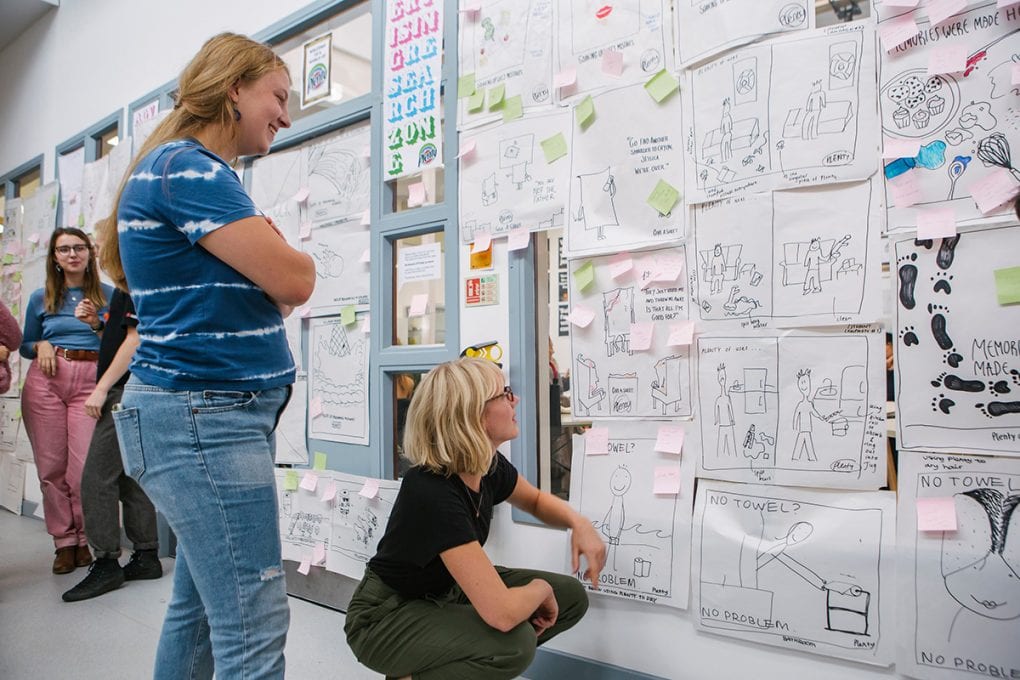Overview
This case study exhibits an innovate flipped classroom approach used by Lucy Cokes, Senior Lecturer for BA(Hons) Creative Advertising as part of a final year module. A flipped classroom reverses the traditional teaching structure by asking students to learn material outside of the classroom in exchange for more meaningful face-to-face activities. Through careful planning and maximising the potential of features available in Learning Space, students found the new approach to be an engaging way to learn.
Flipping the Class
Lucy’s flipped approach focused on teaching students the laws and regulations that marketing campaigns must adhere to. Traditionally this was delivered via a 2-hour lecture with no time to put the knowledge into practice inside the classroom. By swapping the lecture with an online series of short video lectures, students could instead use the 2-hour class time to apply the knowledge using interesting small group activities.
 Is the traditional lecture on the way out? | © Arabelle Zhuang/Mayn Creative
Is the traditional lecture on the way out? | © Arabelle Zhuang/Mayn Creative
An Innovative Strategy for Teaching and Learning
To help the students adapt, Lucy was clear in outlining her expectations of the students on the Learning Space. With the learning resources hosted online, students could access them anywhere at any time. Students could pause, speed-up or slow-down video lectures to meet their individual learning needs and then test their knowledge using a multiple-choice quiz activity and immediately receive feedback.
“The use of audio as opposed to reading is particularly helpful for students with dyslexia, of which we have a significant number in our cohort. I was touched when some of my students made a point of thanking me for producing these online resources as they found it really helpful compared to attending lectures.”
– Lucy Cokes
You may be wondering how can staff be sure that students are participating with the online resources… The activity completion setting is a handy tool built into Learning Space which can be used to track student progress. Checkboxes appear next to each activity which can either be ticked off by students, or automatically triggered when certain conditions are met, such as by completing a quiz. Staff can then view an activity report which provides an overview of where each student is at.
A challenge when using a flipped approach is ensuring that not only students are on board but also that staff are fully invested too. To sell the benefits of the approach, Lucy piloted a flipped session with the course team as part of her PGCHE with Falmouth Flexible, to great success. One colleague noted that ‘all students could benefit from a flipped class structure’.
 A flipped classroom accommodates multiple learning styles. | © Ignas Vincerzevkis
A flipped classroom accommodates multiple learning styles. | © Ignas Vincerzevkis
Opportunities
Lucy has already applied what she has learnt from her first flipped classroom to a first-year module. Although by her own admission, it can take some time to initially create the online resources – the benefits to the students however, is invaluable. From a pedagogical perspective, the approach is forward thinking, as higher education continues to adopt blended learning.
Further Support
Thinking about incorporating a flipped classroom within your own module? Get in touch with the Educational Technology team using etsupport@falmouth.ac.uk. We can help support you find the right technologies and provide top tips for incorporating them within a flipped classroom.